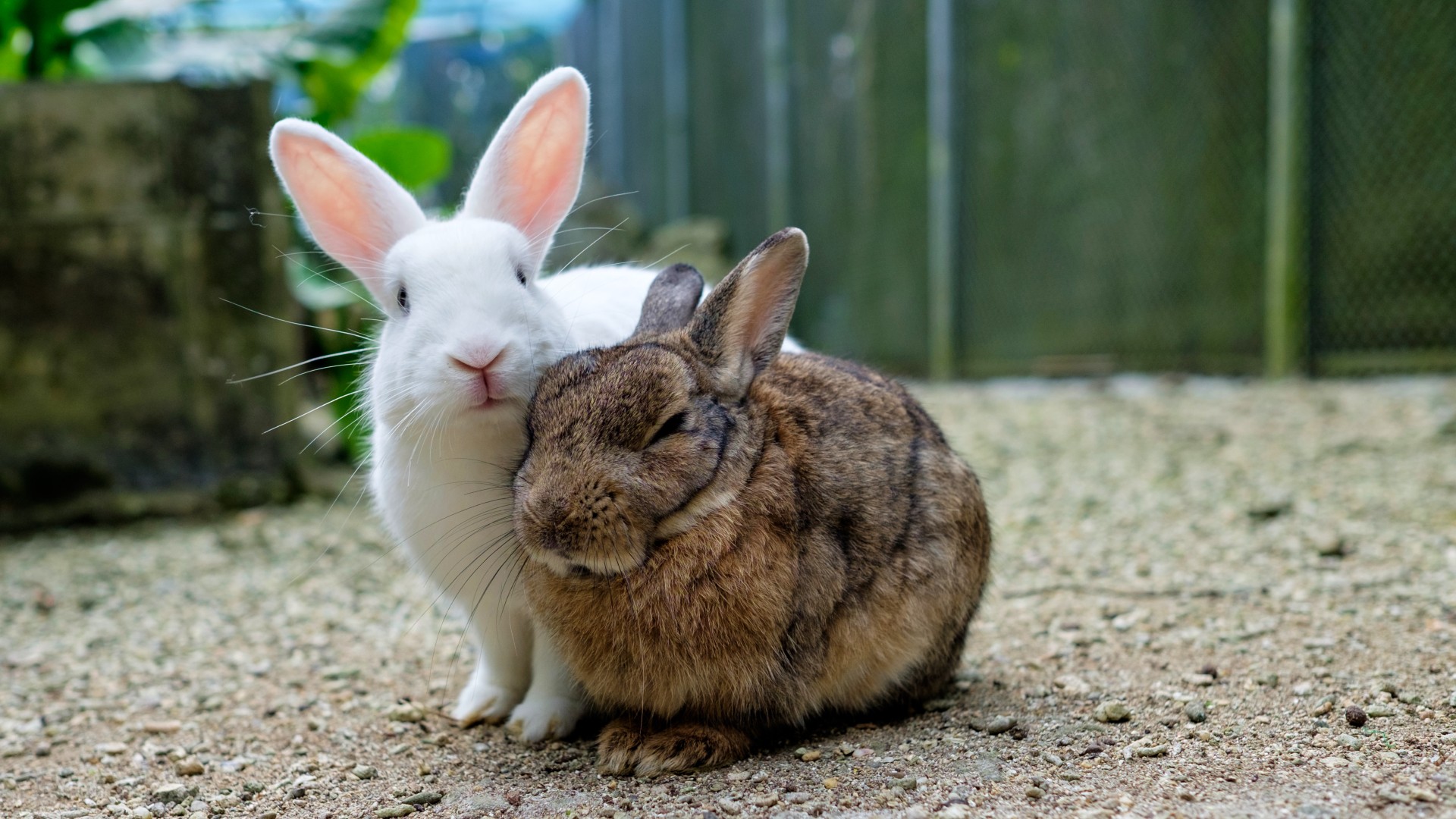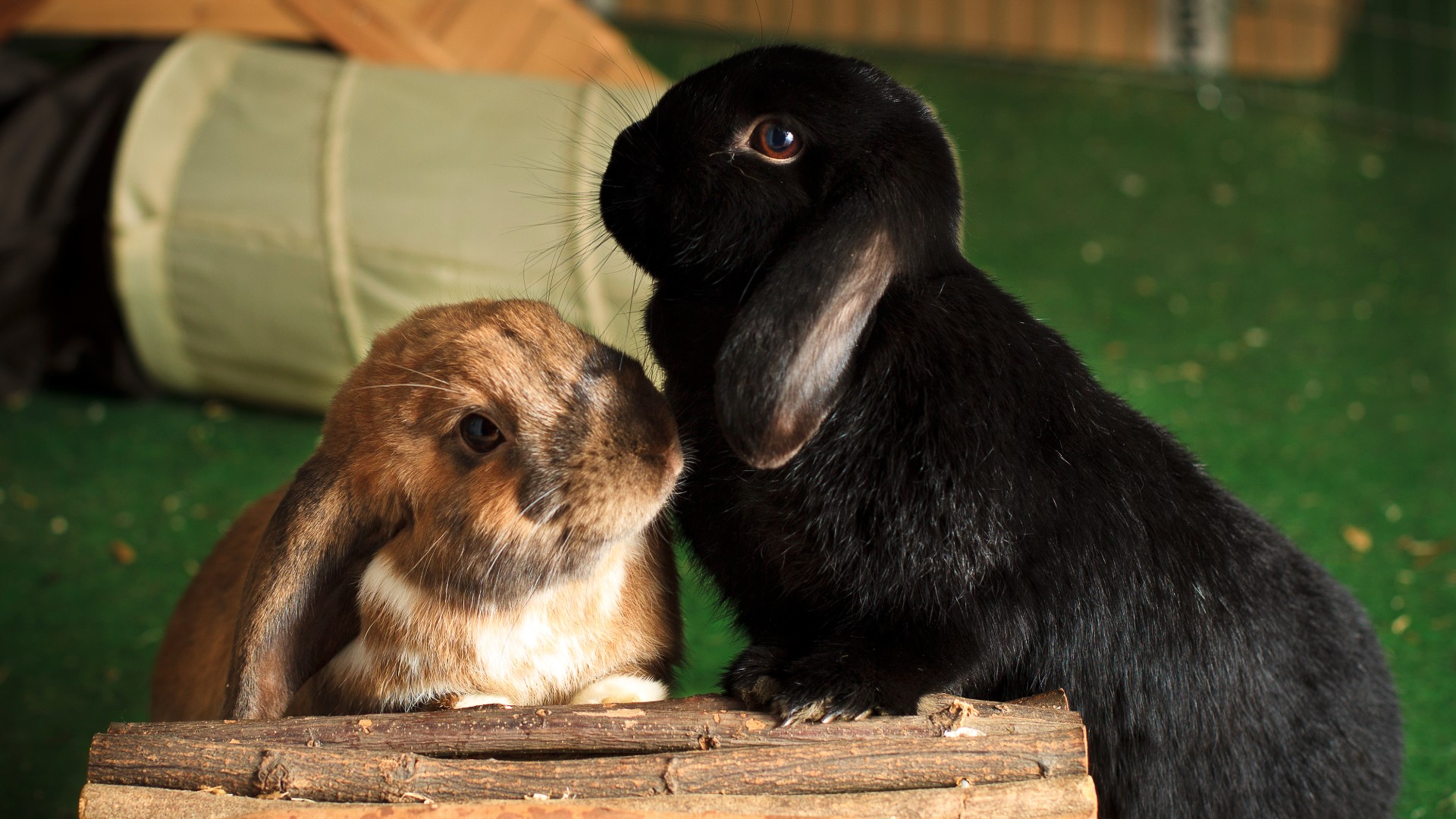How to stop rabbits fighting
Learning how to stop rabbits fighting is essential to keep your floppy-eared friends happy and healthy. Here’s how to prevent it…

Figuring out how to stop rabbits fighting is common amongst pet parents who own more than one bunny. But before you go about trying to find a solution, it’s important to understand why this behavior is occurring in the first place.
A good place to start is by examining wild rabbits. While it’s true that our pet rabbits don’t live like their free-to-roam friends do, they retain many of their wild cousins’ behaviors and instincts and this can prove insightful when it comes to helping us understand what’s going on with our domestic bunnies.
In the wild, rabbits fight to defend territory and food sources from other rabbits, to assert dominance, defend mates and also for survival reasons. These reasons for fighting are hardwired into your floppy-eared friend's DNA, so it’s likely that one of the above reasons is behind the fighting.
And yet, at the same time, the reason one of your rabbit’s is attacking the other, may be less obvious, particularly if they’ve been best buddies for years and the fighting is a new thing. To help you figure out the cause and the solution, we talk you through the reasons for fighting and how to prevent it.
- How to choose the right pet rabbit
- Best indoor rabbit hutches
- Five do’s and don’ts of feeding rabbits correctly
How can I tell if my rabbits are fighting or playing?
Rabbits will play together, and this looks very different from fighting. When rabbits play, they may chase each other, nip at each other (particularly around the tail area), skip and hop in the air and ‘binky’ with joy. This is not fighting.
Fighting in rabbits is much more aggressive with the risk of serious injuries and even death. If your rabbits are fighting, they will have their ears pinned back and will often run and launch at each other, locking on with their teeth and rolling around.
Rabbits will use their very sharp teeth and claws during fighting and they may attempt to lash out at the other rabbit with their hind legs, pull fur out, and can even scream. One rabbit may attempt to run away, but often the other rabbit will chase after it, and in an enclosed area there may be nowhere to run to escape danger.
Get the best advice, tips and top tech for your beloved Pets
Rabbits may fight during bonding, but also at other times, including: if bonded rabbits are separated, if one rabbit is ill, during spring (known as ‘spring fever’), or if there is any disruption to their hierarchy.
It’s important that rabbits be kept in pairs in order to practise normal behaviour. They are a social species, so all rabbits – even house rabbits – need the company of another rabbit. Bonding needs to be done carefully and it is often at this time that fighting can happen. The best combination is a neutered male and neutered female, but whatever the combination both rabbits must be neutered
Should I let my rabbits fight?

Absolutely not! If your rabbits are fighting you must separate them immediately. Be extremely careful not to get bitten or scratched in the process. Wear thick gardening gloves or use some sort of divide, such as broom, to intercept the rabbits to force them to separate.
It is dangerous to allow rabbits to fight, and the underlying reason needs to be found and addressed, to stop it happening again. If either of the rabbits is not neutered, then this must be done. Allow at least 6 weeks for their hormones to settle before carefully attempting to re-bond. If a fight has occurred, both rabbits should have a check up with a vet even if there are no obvious injuries, as these can be hidden under their thick coat.
It’s a good idea when grooming your rabbits to check for any scabs, wounds or scars. A bit like children, your rabbits may wait until you’re not around to fight, so checking them over regularly will help you spot if anything untoward is going on.
How to prevent fights
To help prevent fighting, here are our top tips:
- Only attempt to bond neutered rabbits (at least 6 weeks after neutering)
- Carefully bond rabbits in neutral territory
- Never separate a bonded pair – e.g. take both to all vet visits
- Ensure they have a large and secure enclosure (minimum of 60 square feet), whether kept indoors or outdoors. The best rabbit hutches can be used for shelter but as part of a larger enclosure; likewise indoor cages can be used as a retreat for house rabbits
- If you notice fur in their enclosure or they seem to be tense around each other, monitor them closely
- Scatter their food, rather than placing in a bowl, so they don’t defend the food source, and ensure they have access to lots of hay and grass
- Provide at least two of everything (litter trays, tunnels, water bowls, hides etc.) to prevent guarding behaviours
- Make sure your rabbits have a good selection of the best rabbit toys
Conclusion
Fighting can be extremely dangerous for your rabbits, and scary for you to witness. If triggers are kept to a minimum, the chance of fighting happening is low, and the welfare benefits to rabbits kept in pairs vastly outweigh the risk of injuries from fighting
Claire currently works in Kettering as a Head Nurse in a practice with a high rabbit caseload, as well as frequently lecturing and writing on rabbits to both veterinary professionals and owners.

